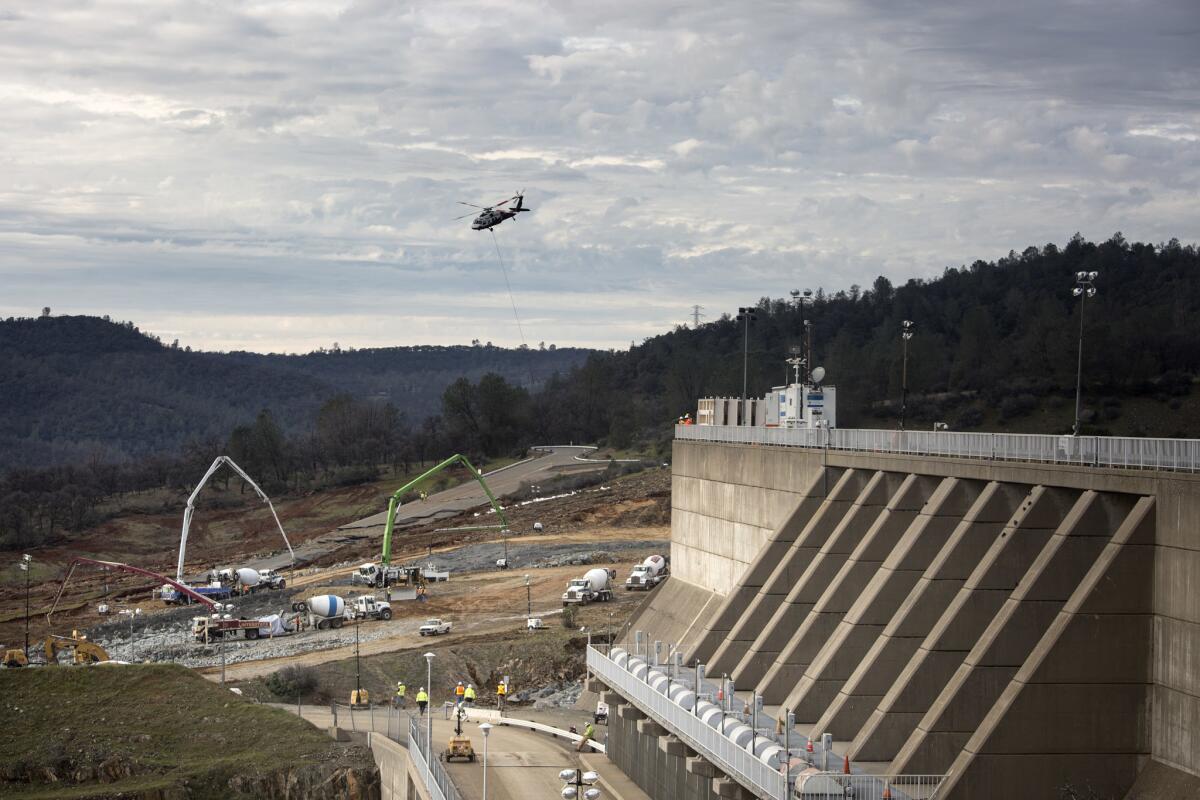Oroville Reservoir reaches ‘pivot point,’ state water official says

For the first time since a crisis at Oroville Reservoir forced the evacuation of more than 100,000 people almost three weeks ago, engineers reactivated a vital hydroelectric plant at the base of the towering dam on Friday.
Renewed operation of the Hyatt Powerplant follows a frantic five-day race to remove tons of debris that posed a hazard to the facility’s massive turbines.
Now that enough debris has been cleared, dam operators can safely release water into the Feather River without using the facility’s badly damaged main spillway.
The water releases will also ensure the survival of millions of steelhead trout and chinook salmon downstream, officials say.
“This is a pivot point in how we’re managing inflows into the river,” said DWR Acting Director Bill Croyle.
Since Monday, crews have worked round the clock to remove some 168,000 cubic yards of trees, rock and sediment that settled beneath the dam. Crews used excavators on floating barges, bulldozers and dump trucks to haul away the debris in a spectacle that resembled the industrious labor of armored ants.
The rocks, sand and vegetation that crews removed was just a fraction of the total 1.7 million cubic yards of debris that littered the waterway in the aftermath of last month’s emergency. Officials say that debris was enough to fill the Houston Astrodome and caused water levels to rise so high that they covered the power plant’s water outlets and threatened operation of the turbines.
By Friday morning however, the waters around the power plant had receded at least 22 feet — enough to safely use the plant’s water outlets.
At 10 a.m., engineers powered up one of the plant’s five turbines. Eventually, when all of the turbines are operational, the plant will be able to flush 14,000 cubic feet of water per second from the reservoir, which DWR officials say is enough to handle the inflow of rain and snowmelt through summer.
The plant’s shutdown was the culmination of a cascading set of problems that struck the reservoir following weeks of heavy rain in Northern California.
The first problem arose in early February, when the reservoir’s main flood control spillway began to erode and engineers stopped using it temporarily. But when the reservoir began to overflow with water, a second, emergency spillway began to erode as well. Fearing that erosion of the unlined emergency spillway might cause a concrete weir to collapse and release a 30-foot wall of water, authorities ordered widespread evacuations Feb. 12.
Although residents below Oroville Dam have since been allowed to return home, they have lived under an evacuation advisory. On Friday, officials said that advisory could be lifted next week if the power plant operates without issue through the weekend, when a series of light storms is anticipated.
For breaking California news, follow @JosephSerna on Twitter.
ALSO
L.A. City Councilman Curren Price faces questions over two marriages
More to Read
Sign up for Essential California
The most important California stories and recommendations in your inbox every morning.
You may occasionally receive promotional content from the Los Angeles Times.











